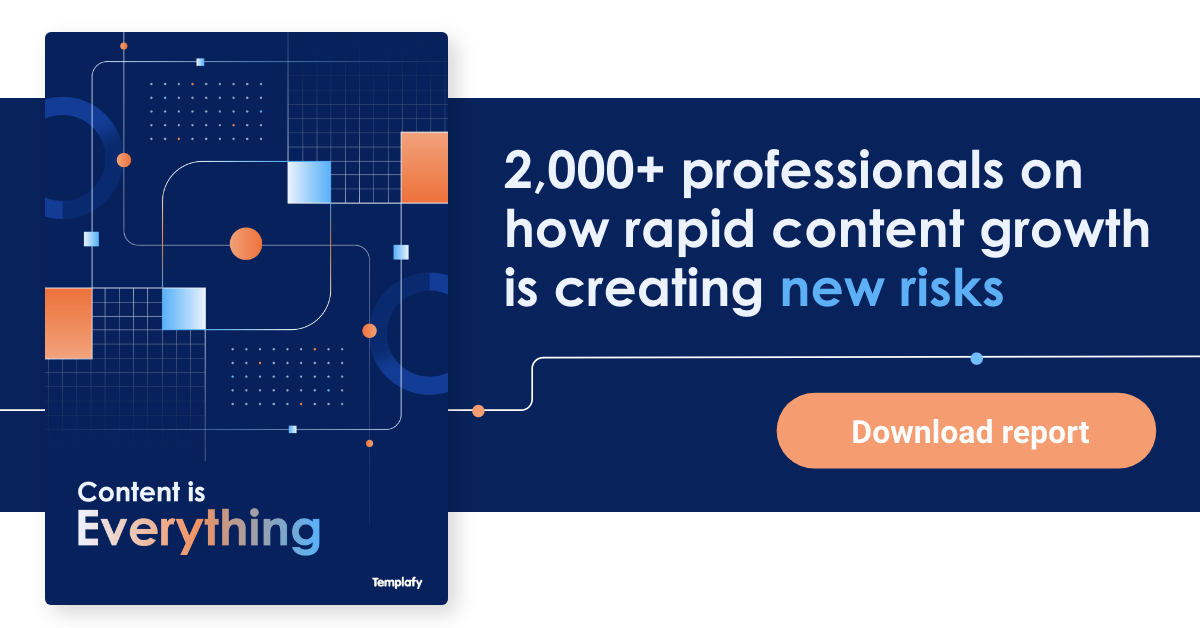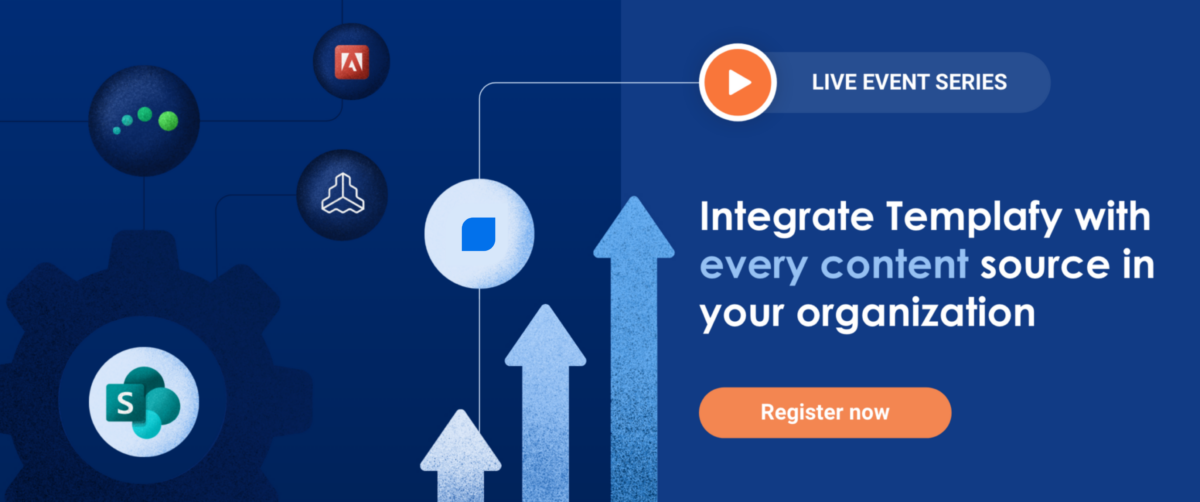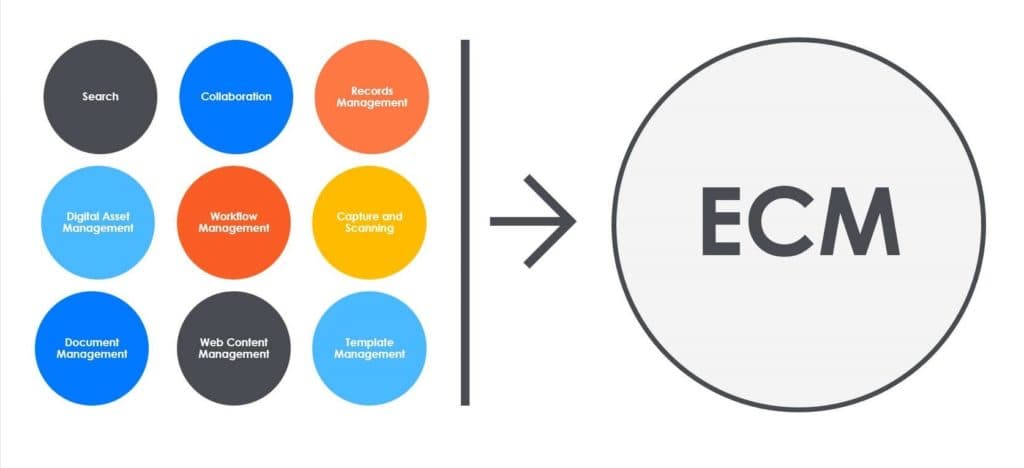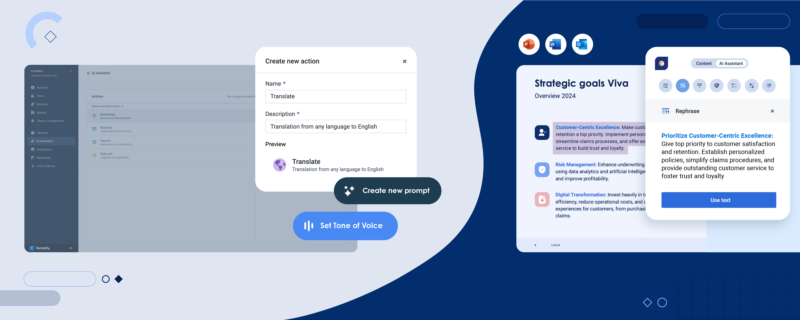Welcome to Part One of our Enterprise Content Management (ECM) series. We know that there’s a lot of jargon out there, so if you’re having trouble telling your DAMs from your DMS, or your CRMs from your ECMs, we’re here to help.
Get our strategy checklist in Part Two of this blog post series.

What is Enterprise Content Management?
Enterprise content management is “Neither a single technology nor a methodology nor a process, it is a dynamic combination of strategies, methods, and tools used to capture, manage, store, preserve, and deliver information supporting key organizational processes through its entire lifecycle.”
If you understood that — or perhaps you know it as as intelligent information management — then you realize how it can facilitate a convenient means for tracking your data. If you consider the fact that the most valuable asset a company has is data, then it makes sense to provide immediate access to relevant data, at any time for authorized users.
To remain competitive in any industry, it is essential to have a system that offers easy organization and delivery in a timely manner. ECM technologies were designed to do just that and more. With an ECM system, you can centralize your documents so that they are searchable and instantly sync to aligned accounts and end users.
Yet, as of March 2017, AIIM retired this general ECM definition, and even the term ECM altogether, instead using the term “Intelligent Information Management” (IIM).
As technology in the ECM space has evolved, IIM is a more comprehensive term that defines all the strategies, methods and tools utilized to capture, create, store, secure, analyze, deliver and automate data.
It also refers to the conversion of data between paper and microfilm to digital and more. When you think of ECM, what is really important is the fact that it encompasses all of these items:
- Search
- Collaboration
- Records management
- Digital asset management
- Workflow management
- Capture and scanning
- Document management
- Template management
- Web content management
This is management of the entire data and content lifecycle from creation to archiving and disposal.
In terms of ECM delivery, it can be applied in four ways:
- Software-as-a-Service (SaaS)
- On-premises and SaaS hybrid
- On-premises software
- Infrastructure-as-a-Service
In today's hyper-connected world, it no longer makes sense to have files and documents scattered across various hard drives, email accounts and smartphones. You don't want to waste time looking for critical pieces of data while your competition is already out there, transforming the industry.
The rise of cloud-based enterprise content management should come as no surprise. Many enterprise companies have sought out an ECM solution to address content issues around distributed workforces that need data access from anywhere, at any time.
According to a recent report, the global market for Cloud Enterprise Content Management, which reached $18.7 billion in 2020, is projected to grow to more than $97 billion by 2026.
ECM is so attractive because it offers a defined set of methods and processes to store, organize and deliver data at any time to its intended recipients. Since data can double in a matter of months, ECM is a critical tool for overcoming the challenge of handling too much paper and removing bottlenecks to information.

What is Enterprise Content Management Software?
Whether you want to call it ECM or IIM, ECM software will index and file your content so that you can quickly and conveniently find information through keywords — just like a search engine. It can also integrate with other systems your company uses to produce a cohesive workflow with a central repository.
The software captures important documents, files and more from any location. You can then identify your content with commonly used tags and labels. Furthermore, you can control access depending on a need-to-know basis.
Automation
An ECM solution can offer access control, workflow, indexing, electronic forms management, web content management, versioning and more. Also, with a cloud enterprise content management platform, you don't have to worry about space or the security of your data.
This is the good news regarding how far ECM technologies have moved forward. As a result, remote workers can share and edit documents from anywhere with workflows, audit trails and version control. At the same time, companies can keep sensitive data protected behind firewalls. This proves vital in terms of disaster recovery where file syncing can be utilized offsite for an improved backup and recovery system.
Integration and compliance across apps
One of the most compelling cases for enterprise content management in the cloud is the ability to integrate across all apps. Templafy offers centralized management of documents, presentations and email content so that compliance is no longer an issue.
Plus, all your content is on-brand. When you think of the fact that employees can produce thousands of documents, presentations and emails daily--you want a system that keeps all those files aligned with the latest company standards.
Without centralized governance, your company faces the risk of legal non-compliance. Furthermore, since Templafy is a Microsoft Gold Partner, it can streamline and govern all employee communications created in Microsoft Office 365.
Increased productivity
One of the many enterprise content management benefits is the ability to make data more accessible so that employees can work on the same document from anywhere and from any device.
This is where a cloud-based ECM solution helps enterprise companies improve external communications and collaboration. In addition, an increasing number of employees are already used to working with quick technology solutions right from their personal devices. They don't want to deal with cumbersome processes.
Instead, they want the ability to share content smoothly and securely.
Read next: Enterprise content management (ECM) strategy
Final thoughts
While every organization has unique objectives and needs, a cloud-based ECM solution offers a collaborative solution that prioritizes security. Connections can be made on everything from service contracts to customer correspondence to marketing materials and more. When authorized users need to know the whole story around a project, they can find it - easily.
Learn more about how Templafy’s document generation platform supports enterprises:




